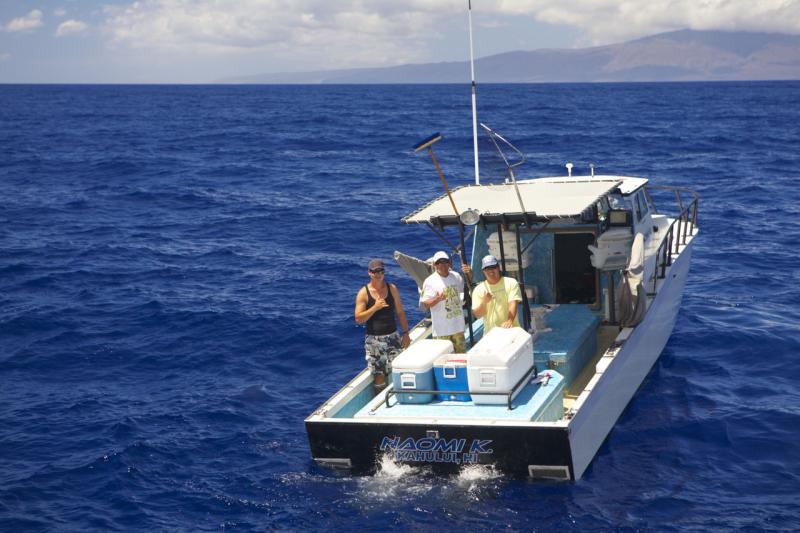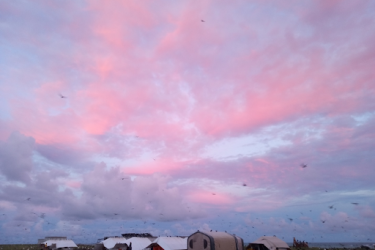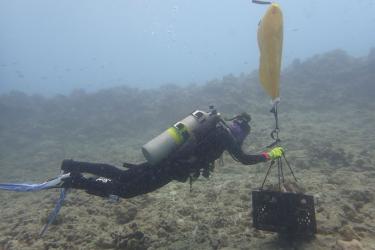How many bottomfish are out there in the deep water around the main Hawaiian Islands? How can local fishermen and fisheries scientists work together to help ensure sustainable catches into the future? How can we collect better data to continue to improve the science used for management? These are some of the questions driving the annual Bottomfish Fishery-Independent Survey in the main Hawaiian Islands known as BFISH.
Fishing for bottomfish has been an important component of the Hawaiian culture and economy for centuries. With the designation of Papahānaumokuākea Marine National Monument in 2006, fishing for bottomfish was restricted to the eight main Hawaiian Islands. Today, bottomfish are an important part of the total domestic commercial catch valued in the millions of dollars.
The Hawai'i "Deep 7" bottomfish stock is made up of opakapaka (pink snapper), onaga (longtail snapper), ehu (squirrelfish snapper), kalekale (Von Siebold's snapper), gindai (Brigham's snapper), lehi (silverjaw snapper), and hapuʻupuʻu (Seale's grouper), has been under a formal fishery management plan since 2005.

Researchers deploy the Modular Optical Underwater Survey System from a small boat (Photo: NOAA Fisheries).
The Pacific Islands Fisheries Science Center is responsible for conducting assessments of the Deep 7 stock, used by managers to develop annual commercial fishery catch limits. The stock assessment process requires reliable sources of data on catch, fishing effort, biology, and abundance. In an effort to continually improve the data going into stock assessments, we began developing the BFISH survey in 2016. These fishery-independent surveys, which are conducted through a partnership with local commercial fishermen, provide scientific estimates of total population abundance, an important calibration for assessment models.

Map of sampling locations planned for the 2017 bottomfish survey. The 325 cooperative research fishing locations are shown in green while the 100 Modular Optical Underwater Survey System camera stations are shown in red. Sampling within State of Hawai'i Bottomfish Restricted Fishing Areas conducted under Hawai'i Department of Aquatic Resources permit #SAP-2017-35.
The BFISH survey has two main components. The first component is a cooperative research fishing survey carried out by the Pacific Islands Fisheries Group, which contracts local commercial fishermen to collect data using a standardized traditional fishing method. This year, from September 1 to October 31, the fishermen are sampling 325 specific locations around the eight main Hawaiian Islands.
At the same time, our scientists will be conducting camera surveys at 100 sampling stations with the Modular Optical Underwater Survey System.

The Modular Optical Underwater Survey System, used to collect video data on the Deep 7 stock. The stereo-camera pair (F) is used to collect video data, which are stored by an internal digital video recorder (C), and powered by a rechargeable battery (D).
The surveys will be completed in early November and data analysis will take place over the following few months.
"This effort is five years in development and we are anxious to use our state-of-the-art cooperative research to understand fish populations and provide the best scientific information to fishery managers for the Deep 7 complex," said Dr. Michael Seki, Director of the Pacific Islands Fisheries Science Center.
Dr. Benjamin Richards, Russell Reardon, and Justin Ossolinski are leading this research expedition.



